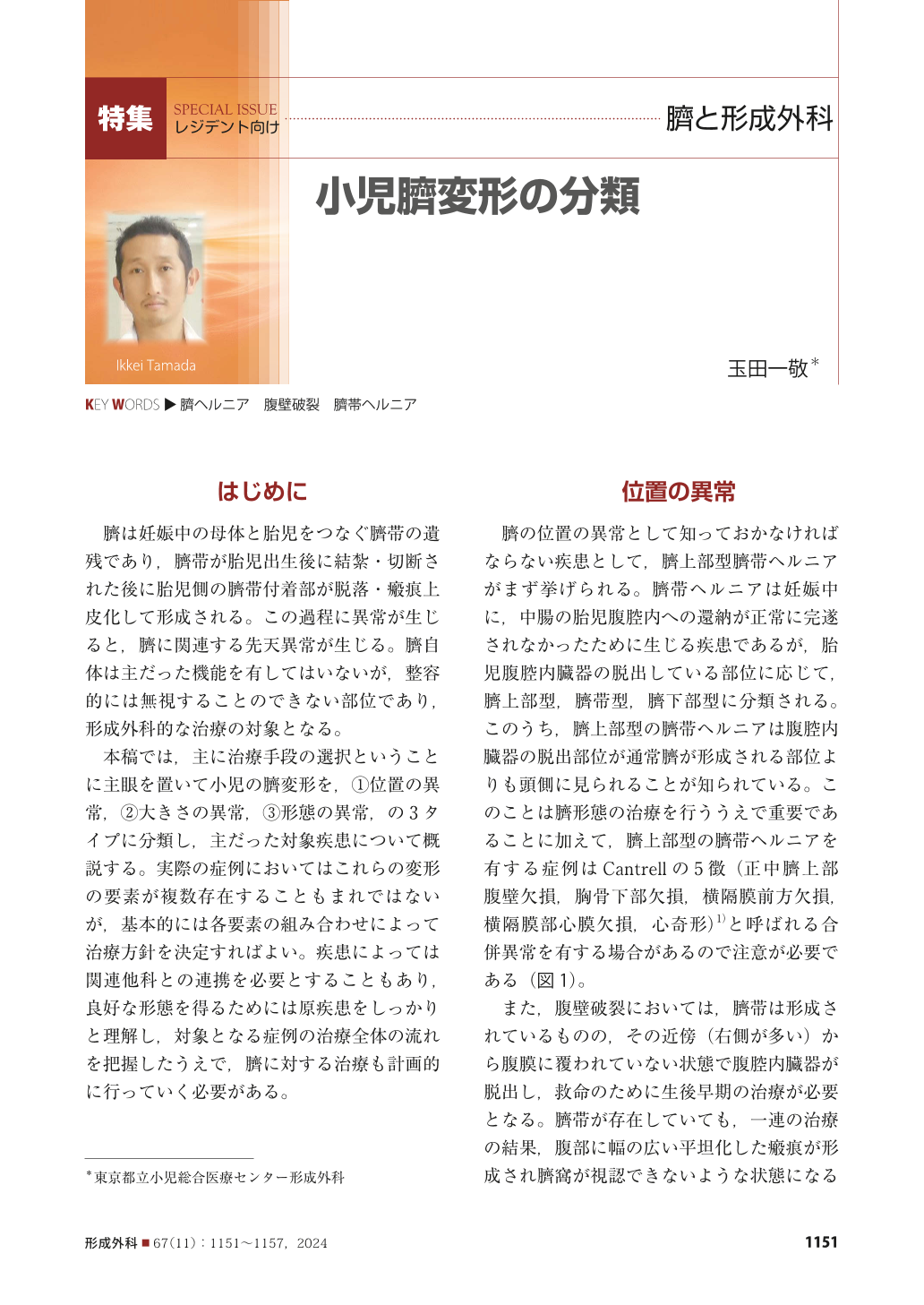Japanese
English
- 有料閲覧
- Abstract 文献概要
- 1ページ目 Look Inside
- 参考文献 Reference
はじめに
臍は妊娠中の母体と胎児をつなぐ臍帯の遺残であり,臍帯が胎児出生後に結紮・切断された後に胎児側の臍帯付着部が脱落・瘢痕上皮化して形成される。この過程に異常が生じると,臍に関連する先天異常が生じる。臍自体は主だった機能を有してはいないが,整容的には無視することのできない部位であり,形成外科的な治療の対象となる。
本稿では,主に治療手段の選択ということに主眼を置いて小児の臍変形を,①位置の異常,②大きさの異常,③形態の異常,の3タイプに分類し,主だった対象疾患について概説する。実際の症例においてはこれらの変形の要素が複数存在することもまれではないが,基本的には各要素の組み合わせによって治療方針を決定すればよい。疾患によっては関連他科との連携を必要とすることもあり,良好な形態を得るためには原疾患をしっかりと理解し,対象となる症例の治療全体の流れを把握したうえで,臍に対する治療も計画的に行っていく必要がある。
The umbilicus is the remnant of the umbilical cord that connects the mother and fetus during pregnancy, and if an abnormality occurs in the process of shedding the umbilical cord, birth defects related to the umbilicus occur. Although the navel itself has no major function, it is an area that cannot be ignored cosmetically and is a target of plastic surgery treatment. There are a wide variety of background diseases that cause abnormalities in the umbilicus. It may be necessary to provide treatment jointly with related clinical departments, and it is thus necessary to have general knowledge about the treatment of background diseases. In surgical treatments, it is easier to understand umbilical abnormalities by dividing them into three elements: abnormal position, abnormal size, and abnormal shape. Ultimately, it is important to securely suture an appropriately-sized umbilical pouch to the abdominal wall.

Copyright© 2024 KOKUSEIDO CO., LTD. All Rights Reserved.


